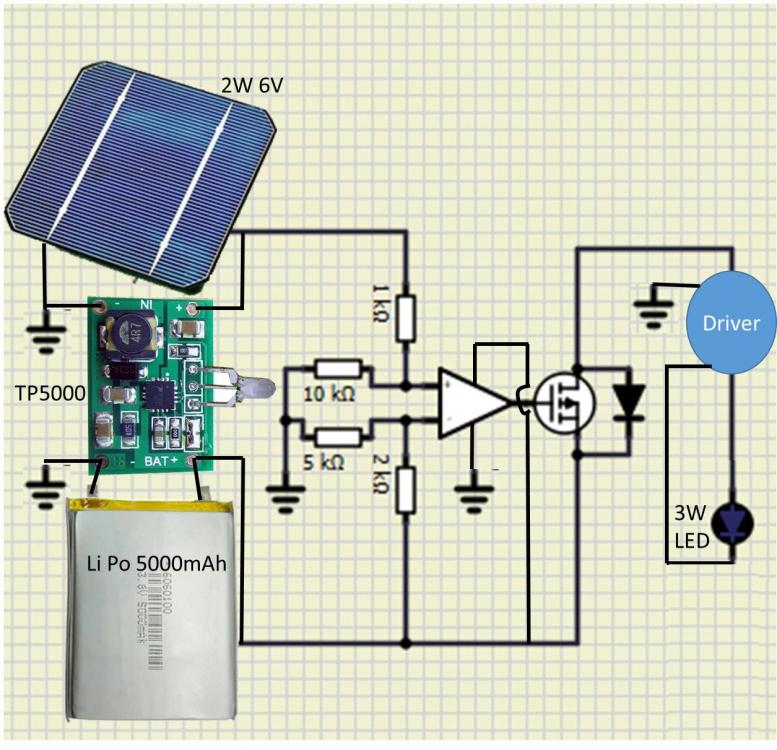Search the Community
Showing results for tags 'automatic'.
-
The high temperature of the power components is a known phenomenon in electronics. To overcome this challenge, the designers mount heatsinks on the components to dissipate the heat, however, in many commercial and home appliance devices, the embedded heatsink is not adequate and the air must be circulated faster to reduce the heatsink and component temperature, otherwise, the lifetime of the component is reduced significantly. The proposed automatic FAN controller board is simple, compact, and can be embedded inside commercial devices. The LM35 temperature sensor could be fixed on the heatsink using some silicon glue. The user can easily set the temperature threshold using a potentiometer. The board can be supplied using a 5V or a 12V supply, therefore a variety of 5V, 12V, miniature, and PC FANs can be used. I used Altium Designer 21 and SamacSys component libraries (SamacSys Altium plugin) to draw the schematic and PCB. Except for the connectors, all components are SMD and easy to solder. References Source: https://www.pcbway.com/blog/technology/Cooling_FAN_Controller_using_an_LM35_8d3d76cb.html [1]: LM358 datasheet: https://www.st.com/resource/en/datasheet/lm358.pdf [2]: SI2302 datasheet: https://www.vishay.com/docs/63653/si2302dds.pdf [3]: LM358 schematic symbol, pcb footprint, 3D model: https://componentsearchengine.com/part-view/LM358D/STMicroelectronics [4]: Si2302 schematic symbol, pcb footprint, 3D model: https://componentsearchengine.com/part-view/SI2302DDS-T1-GE3/Vishay [5]: Electronic designing CAD software plugins: https://www.samacsys.com/library-loader-help [6]: Altium Designer plugin: https://www.samacsys.com/altium-designer-library-instructions
- 1 reply
-
- fan
- cooling fan
-
(and 7 more)
Tagged with:
-
Proper thermal dissipation is an essential rule for nowadays electronics. The best operating temperature for the electronic components is 25 degrees (standard room temperature). Thermal dissipation in some commercial devices is not done properly which affects the lifetime and performance of the devices. So, embedding a compact automatic cooling Fan controller board would be useful. Also, it can be used to protect your own designed circuits and their power components, such as regulators, Mosfets, power transistors … etc. Previously, I had introduced a circuit to control the cooling fans, however, my intention was not to use any microcontroller and keep it as simple as possible. So, the device was a simple ON/OFF switch for the FAN, depending on the defined temperature threshold. This time, I decided to design a complete and more professional circuit to control the majority of the standard FANs (25KHz PWM) using an LM35 temperature sensor and an ATTiny13 microcontroller. I used SMD components and the PCB board is compact. It can control one or several standard 3-wires or 4-wires FANs, connected in parallel, such as CPU Fans. Moreover, the target device/component can be protected against over-temperature using a Relay. The user is also notified by visual/acoustic warnings (a flashing LED and a Buzzer). To design the schematic and PCB, I used Altium Designer 22 and the SamacSys component libraries (Altium plugin). To get high-quality fabricated PCB boards, you can send the Gerbers to PCBWay and purchase original components using the componentsearchengine.com. I initially tested the circuit on a breadboard. I used the Siglent SDM3045X multimeter to accurately examine the voltages and the Siglent SDS1104X-E oscilloscope to examine the shape, duty cycle, and frequency of the PWM pulse. References Ref: https://www.eeweb.com/pwm-cooling-fan-controller-and-over-temperature-protection-using-lm35-and-attiny13/ [1]: ATTiny13 datasheet: https://componentsearchengine.com/Datasheets/1/ATtiny13-20SSU.pdf [2]: 78L05 datasheet: https://www.st.com/resource/en/datasheet/l78l.pdf [3]: 2N7002 datasheet: https://datasheet.datasheetarchive.com/originals/distributors/Datasheets-26/DSA-502170.pdf [4]: 2N7002 schematic symbol, PCB footprint, 3D model: https://componentsearchengine.com/part-view/2N7002/Nexperia [5]: L78L05 schematic symbol, PCB footprint, 3D model: https://componentsearchengine.com/part-view/L78L05ABD13TR/STMicroelectronics [6]: ATTiny13 schematic symbol, PCB footprint, 3D model: https://componentsearchengine.com/part-view/ATTINY13-20SSU/Microchip [7]: Electronic designing CAD software plugins: https://www.samacsys.com/library-loader-help [8]: Altium Designer plugin: https://www.samacsys.com/altium-designer-library-instructions [9]: MicroCore board manager: https://github.com/MCUdude/MicroCore#analog-pins [10]: Siglent SDS1104X-E oscilloscope: https://siglentna.com/product/sds1104x-e-100-mhz/
-
- temperature
- fan
-
(and 7 more)
Tagged with:
-
Hello. I would like to make a garden solar lamp that automatically turn on when the sun goes down. I tryed first with a transistor s9013 npn (seen on youtube), but it restricted the current, i suspect because of the internal resistance of the transistor. I decided to try the use of an Op amp as comparator, with a low internal resistance P channel Mosfet. I don't have much experience with these components, and the best way of learning is trying right? So see below my circuit. My problem is that it seem to work fine when the battery is full but the solar charging doesn't seem to be very efficient (the charge light does turn ON) and the battery looses it's charge fast, leading to a weired blinking LED. would anyone see a problem with my circuit explaining that? thank you very much for your help Best Damien

